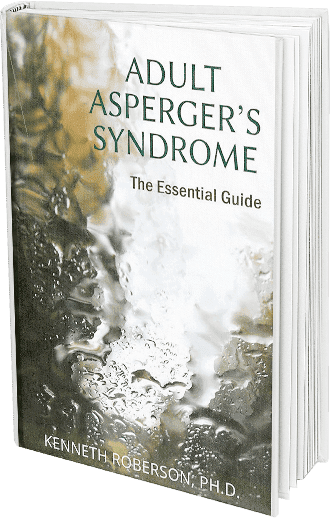UNLOCK YOUR POTENTIAL WITH A COMPREHENSIVE ASSESSMENT FOR AUTISM SPECTRUM DISORDER
Take the first step towards a balanced and successful life with an assessment for ASD. Together we can help you thrive and lead a more productive life.
Learn MORE ABOUT THE ASSESSMENT PROCESSStart your journey towards a happier, more fulfilling life today.
I provide compassionate, understanding, and personalized therapy for Adults with Autism Spectrum Disorder. Enhance your social skills, develop realistic self-understanding, nurture your self-esteem, and navigate life’s complexities to unlock your true potential.
Learn MORE ABOUT ASD TherapySTRENGTHEN YOUR BOND WITH NEURODIVERSE COUPLES THERAPY
Join me in a secure and understanding environment where neurodiverse couples can enhance their relationships. Improve communication, foster deeper connections, and build a fulfilling relationship.
Learn MORE ABOUT Neurodiverse Couples TherapyMy work has focused on helping adults on the autism spectrum find clarity and empowerment, for themselves and in their relationships. Through personalized assessments and treatment services, l hope to promote a life of understanding, acceptance, and fulfillment for those with ASD.
About Me
Kenneth Roberson, Ph.D.
I believe that everyone deserves to have their unique experiences recognized and validated. I also understand how important it is to be understood and empowered. That is why I offer a comprehensive approach to Autism Spectrum Disorder in adults.
I can assess you to determine whether you meet the criteria for ASD.
I also provide individual therapy for adults who are seeking more effective social skills, improved self-understanding, and greater self-esteem.
Finally, I help neurodiverse couples develop positive, healthy relationship patterns that improve communication and reduce negative interactions.
If you are interested in pursuing either an ASD assessment, individual Autism Spectrum Disorder therapy, or neurodiverse couples therapy please email me through the contact form below.
In the meantime, check out my online articles for helpful information and resources.
The Essential Guide

ADULT ASPERGER’S SYNDROME: THE ESSENTIAL GUIDE
Are you looking for a reference guide about Asperger’s in adults?
Do you have questions you’d like to ask an expert in adult Asperger’s?
If your answer is Yes to any of these questions, this book is for you.
Clinical psychologist and Asperger’s authority, Dr. Kenneth Roberson, examines the often neglected area of Asperger’s in adults, covering topics such as: What is Asperger’s, The Main Problem of Asperger’s, Treatment of Adult Asperger’s Syndrome, and Living Well With Asperger’s.
These and many other subjects are covered in this important addition to the field of Asperger’s as it occurs in adults. Resources and reference material about adult Asperger’s are included, along with a feature allowing readers to ask questions of Dr. Roberson.
Download a Chapter for Free!
ASD Assessment
Are you an adult seeking a diagnosis for Autism Spectrum Disorder (ASD)?
You’ve come to the right place!
I offer comprehensive assessments and support for individuals across California, through convenient video consultations. My mission is to help you address the challenges of ASD and assist you in leading a balanced, successful life. A diagnosis can clarify your strengths and weaknesses, mend relationships, and guide personal and career decisions.
My assessment process combines psychological testing and clinical diagnosis, evaluating your social, emotional, academic, and work history, with input from someone close to you.
An ASD assessment can assist you in improving your behavior and well-being, including enhanced work accommodations, employment assistance, disclosure support, and socializing skills enhancement.
To begin, click ‘Schedule an Appointment’. I look forward to helping you achieve greater understanding and a more successful and productive life.
Gain clarity
Receive a comprehensive assessment to determine if you have Autism Spectrum Disorder, providing a clear understanding of your unique traits and challenges.
Personal growth
Understand your strengths and weaknesses, enabling you to navigate relationships, work environments, and personal interactions more effectively.
Professional support
Seek accommodations at work or explore career paths that align with your strengths and interests, enhancing job satisfaction and productivity.
Improved relationships
Renew or repair relationships affected by ASD with a better understanding of your social and emotional presentation.
Therapeutic approach
Collaborate more effectively with helping professionals, ensuring you receive the support and guidance tailored to your specific needs.
Community connection
Connect with like-minded individuals and interest-based groups, fostering socializing skills and a sense of belonging.
Disclosure Insights
Make informed decisions about disclosing your ASD diagnosis to family, friends, partners, and coworkers, fostering understanding and empathy.
Video consultations
Access ASD assessment services from the comfort of your own home, regardless of your location throughout California.
ASD Therapy
Ready to take the first step towards a happier and more fulfilling life with Autism Spectrum Disorder?
Schedule a video consultation with me, and unlock your potential. With my expertise as a therapist, I can help you navigate the challenges of ASD, including improving your social skills, developing a realistic understanding of yourself, reducing self-doubt, and increasing self-esteem.
By getting a professional assessment and diagnosis of ASD, you can gain a comprehensive understanding of your unique strengths, challenges, and needs. This knowledge empowers you to access appropriate support, interventions, and resources that can significantly enhance your quality of life, improve social interactions, and unlock your full potential. My goal is to provide you with personalized guidance on navigating the complexities of ASD, leading to increased self-awareness, self-acceptance, and overall well-being.
To schedule a video consultation, click the Schedule a Consultation button below.
Improve Non-Verbal Communication
By working with a therapist, individuals with ASD can learn to interpret body language and non-verbal cues, which can greatly improve their ability to navigate social interactions.
Social Skills
Therapy also focuses on improving social skills, helping adults with ASD develop the necessary tools to build and maintain relationships.
Realistic Understanding
Developing a realistic understanding of oneself and others is an essential part of therapy for adults with ASD, as it can help reduce misunderstandings and enhance communication.
Reduce Self-Doubt
By addressing self-doubt, therapy can help individuals with ASD gain confidence in their abilities and navigate the challenges that arise from living with the condition.
Increase Self-Esteem
Increasing self-esteem is a crucial aspect of therapy for adults with ASD, as it can lead to improved overall well-being and a greater sense of self-worth.
neurodiverse couples therapy
Are you ready to enhance your relationship and find greater understanding and connection with your neurodiverse partner?
Discover the transformative power of therapy for couples where one person or both are autistic. I offer specialized expertise and guidance to help navigate the unique challenges faced by neurodiverse couples throughout California via video consultations.
Take the first step towards a fulfilling and successful relationship by clicking the ‘Schedule an Appointment’ button below. Through personalized sessions, I will provide you with the tools and strategies to improve communication, address conflicts, and build a stronger bond between you and your partner. Don’t let the challenges of neurodiversity hinder your relationship. Invest in the future of your partnership and experience the transformative effects of couple’s therapy.
Interested in neurodiverse couple therapy? Contact me, and discover how therapy can help you overcome challenges, improve communication, and build a successful relationship. Click the ‘Schedule an Appointment’ button to arrange a video consultation and take the first step towards creating a happier and healthier future together.
Enhance Your Relationship
Discover the steps to get started and see how therapy can improve communication, understanding, and connection in your relationship with a partner on the Autism Spectrum Disorder (ASD). Take the first step towards a happier and healthier relationship today.
Overcome Challenges
Understand why therapy is important for neurodiverse couples and learn how it can help you navigate the unique challenges faced by couples with an ASD partner. Gain valuable insights, tools, and strategies to improve your relationship and create a more harmonious and fulfilling partnership.
Invest in Your Future
Wondering how long it will take to improve difficulties in your neurodiverse relationship? Discover the process used in neurodiverse couple therapy and learn how consistent sessions over a period of several months can help you reconnect, create healthier dynamics, and foster a successful and satisfying relationship.
Empowerment for Partners
If you’re living with a partner on the Autism Spectrum Disorder, therapy can provide invaluable support. Explore how therapy can help improve communication, set boundaries, and develop healthy expectations to enhance your relationship. Take the first step towards a more harmonious and fulfilling life together.
What They're Saying
Ready to hear from those who were once where you are now?
Others were once where you are now. They took the first step, reached out, and found understanding and acceptance. Their stories are a testament to the transformative power of empathy and understanding.
Contact Me
Are you ready to take the first step towards understanding and acceptance?
Reach out to me. Let’s embark on this journey together. Remember, it’s not just about finding answers; it’s about finding yourself.
FAQs
Got Questions About Autism Spectrum Disorder in Adults?
You have questions, and it’s natural. What does an assessment involve? How can a diagnosis help? We’ve answered these and more in our FAQ section. If you don’t find your question there, reach out. We’re here to answer.
How can getting diagnosed with autism as an adult help me?
Getting properly diagnosed can validate lifelong challenges, open up access to accommodations and services, and help you embrace your unique strengths.
I provide tailored autism assessments for adults that lead to greater self-knowledge and personalized treatment plans.
I think I may have undiagnosed autism as an adult. What should I do?
If you suspect you may be on the autism spectrum, the first step is to seek an assessment from an experienced professional like myself. I specialize in autism diagnosis and therapy for adults. Contact me to schedule a comprehensive evaluation.
Getting an accurate diagnosis is key to understanding yourself better and getting the support you need.
What are some common signs of autism in adults?
Signs can include difficulty with eye contact, reading social cues, forming relationships, sensory issues, need for routine, and intense focus on interests. I specialize in identifying and assessing these symptoms in adults.
Are there advantages to being an adult with autism?
Absolutely! Many autistic adults excel in areas like attention to detail, focus, honesty, reliability, creativity, and loyalty. I help clients embrace their strengths through assessment, diagnosis, therapy, and support.
What kind of therapy is available for adults with autism?
Psychotherapy, social skills training, speech therapy, and occupational therapy can all help adults on the spectrum improve communication, manage emotions, increase independence, and enhance quality of life.
I offer individualized therapy tailored to your needs.
I think my partner may have undiagnosed autism. What should I do?
If you suspect your partner is on the spectrum, I provide couples counseling and therapy for neurodiverse relationships.
Getting an assessment and diagnosis is important for understanding one another better.
Where can I find resources for adults with autism?
There are many great resources out there including support groups, social skills classes, job assistance, and more. I guide people to customized services to meet their needs.
How can I learn more about autism as an adult?
Speaking with an experienced professional like myself is a great start. I’m happy to answer your questions, provide assessments, refer you to resources, and offer ongoing therapy and support.
Newsletter
Join our newsletter for the latest articles, news, videos & resource updates.
